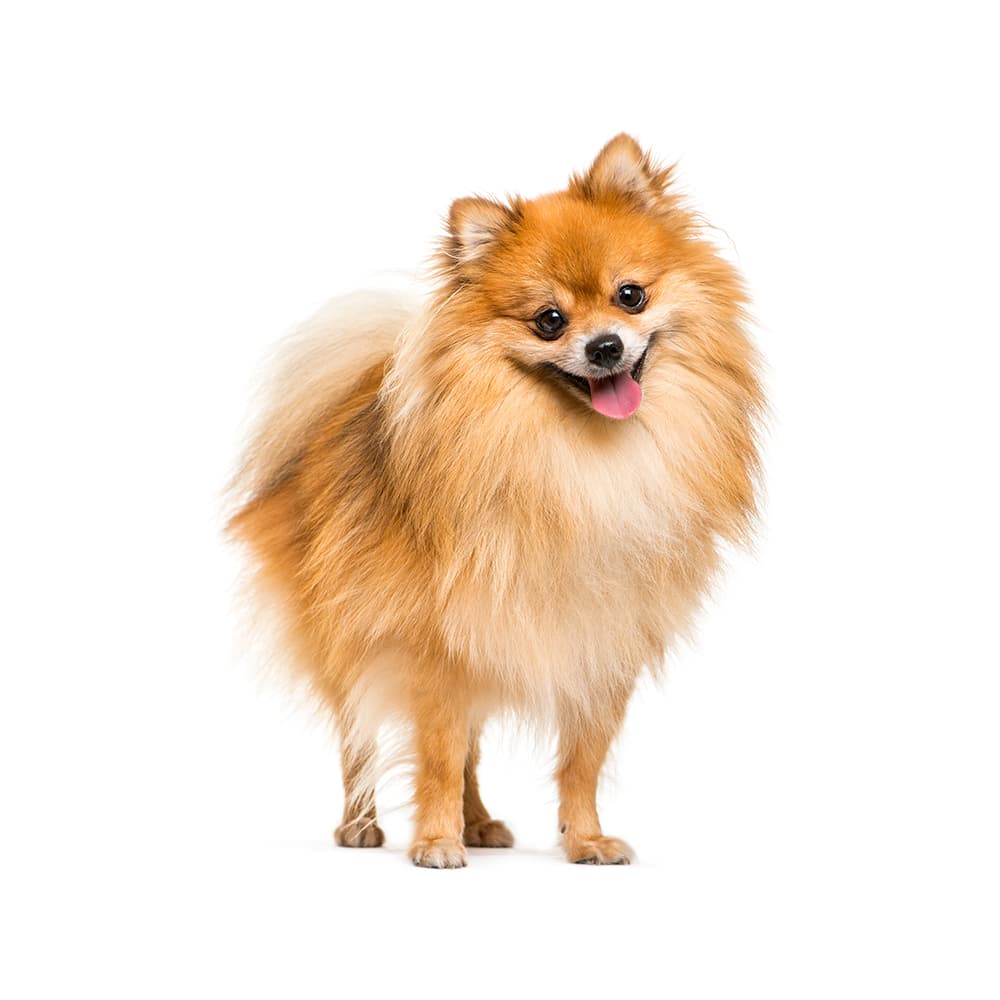Basepaws analyzes this breed as part of a group of other breeds.


Basepaws analyzes this breed as part of a group of other breeds.


Basepaws analyzes this breed as part of a group that also includes German Spitz, Keeshond, Pomeranian.
Despite being distinct in characteristics and origin, some pairs or groups of breeds lack the number of genetic differences required to distinguish these populations from one another, particularly when only a subset of these differences are inherited by a mixed breed dog. As we continue to expand our breed database, we aim to increase the resolution of our ancestry algorithm such that differentiating between increasingly specific ancestral sources becomes possible.

The Pomeranian is a breed of dog that comes from the region of Pomerania, which is now in modern-day Poland and Germany. They are a part of the Spitz family, a type of dog with distinct features such as dense coats, small ears, and pointed muzzles that are known for their abilities in cold weather. The Pomeranian's ancestors were much larger sled-pulling dogs used in the Arctic regions. The breed as we know it today was largely developed in Britain during the 19th century. Queen Victoria of England owned a particularly small Pomeranian, which led to a trend of breeding smaller Pomeranians. The breed's popularity has remained stable since then, and they are one of the more common toy breeds.
Pomeranians can suffer from eye conditions, including vitreous degeneration, cataracts, distichiasis, entropion, progressive retinal atrophy (prcd), progressive retinal atrophy (rcd3), and persistent pupillary membranes. They can also be affected by many other health issues, including adrenal sex hormone imbalance, albinism (oculocutaneous), alopecia X (black skin disease), atlantoaxial instability, cryptorchidism, cyclic hematopoiesis, deafness, demodicosis, eclampsia, elbow dysplasia (ununited anconeal process), degenerative myelopathy, gallbladder mucocele, globoid cell leukodystrophy, growth hormone-responsive dermatosis, hydrocephalus, hyperuricosuria, hypoadrenocorticism, hypothyroidism, intervertebral disk disease, meningoencephalitis (necrotizing), methemoglobin reductase deficiency, heart conditions including mitral valve disease, oligodontia, panniculitis, patellar luxation, patent ductus arteriosus, portosystemic shunts, prognathism, rickets, sebaceous adenitis, seizures, stomatocytosis, tracheal collapse, urolithiasis (calcium oxalate), and von Willebrand Disease (Type I).
Pomeranians are known for their lively and playful nature. They're intelligent, curious, and love to be the center of attention. Despite their small size, they are fearless and can sometimes be aggressive with other dogs. They tend to be loyal to their families and can be somewhat wary of strangers, which makes them good watchdogs. Training and socialization from a young age are important to help them become well-rounded dogs.
A canine genetic lineage is a group of individuals or entire breeds that descended from common ancestors predating modern breed formation. Often these lineages are associated with a ‘type’ of dog with a unique historical working role and associated behaviors (e.g., herding, scent hunting, etc.).
Spitz and Sled Dogs originate in the Arctic and subarctic regions which caused them the develop adaptations to cold climates. Some of these adaptations give rise to characteristics of the lineage, most notably a dense double coat that helps with insulation. The lineage of these dogs can be followed back to ancient breeds developed by Indigenous people. These ancient breeds were used as an aid for transportation, herding, guarding, and hunting. These jobs have created dogs that are independent, intelligent and have strong work ethics as well as a sturdy body that helps them to pull sleds or go on long journeys over rough terrain.
Example breeds with ancestry from this lineage include Akita, Chow Chow, and Siberian Husky.
They're sometimes referred to as "Poms" or "Pom Poms."
Mozart and Queen Victoria both had Pomeranians.
The smallest dog on the Titanic was a Pomeranian that survived the sinking.
Pomeranians are often good at learning tricks and can do well in dog sports like agility and obedience.
https://vgl.ucdavis.edu/breed/pomeranian
https://www.ukcdogs.com/Pomeranian
https://www.akc.org/dog-breeds/pomeranian/
Recommended by top vets with decades of experience
21 breeds
64 genetic health markers
50 genetic trait markers
